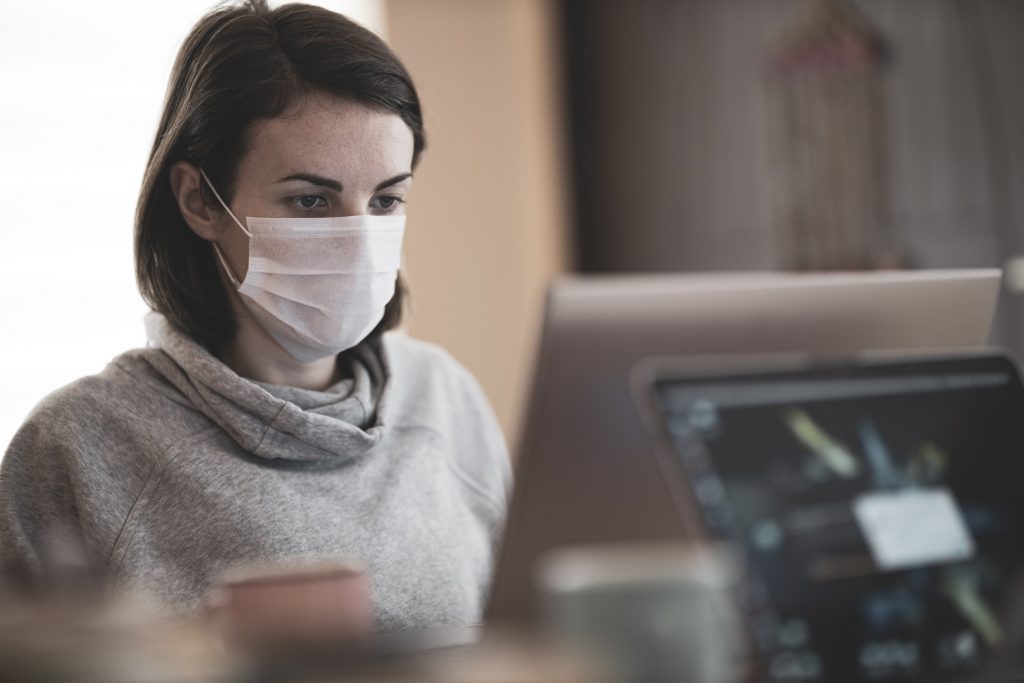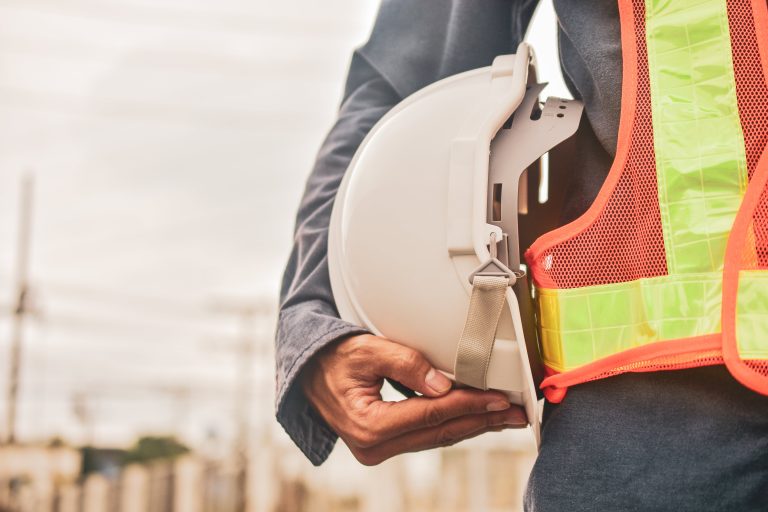BLOG
The return of shielding | Can clinically extremely vulnerable people go to work?
England has now emerged from lockdown and re-entered a system of tiered restrictions. To coincide with this change, the government has published updated shielding guidance which applies as of 2 December.
So where does this leave your clinically extremely vulnerable staff? It’s likely that some will be hesitant to return to work, especially in areas where risk is higher, but what does the government guidance state and where do you stand as an employer in these situations?
Blog

Can clinically extremely vulnerable (CEV) employees go to work?
The government guidance on shielding and protecting people defined on medical grounds as extremely vulnerable says that everyone, including CEV employees, should work from home where possible. If this isn’t possible, people can still go to work provided that the workplace is COVID-secure (generally, or specifically for that individual).
If they cannot work from home, CEV individuals should only avoid the workplace if they have received a shielding notice from NHS Test and Trace, and these notices will only apply to those in the worst-affected Tier 3 areas (Tiers 3a and 3b).
Free Download: Vulnerable Persons Risk Assessment Template
Use this risk assessment template to ensure that any potential hazards to which vulnerable employees are exposed are evaluated and managed.
In Scotland, the advice remains that CEV individuals should work from home if they can. Where this isn’t possible, they can attend work in Tiers 1, 2 and 3. For those in Tier 4 areas, the government guidance on shielding and protecting people who are clinically extremely vulnerable from COVID-19 states: “The Chief Medical Officer will issue a letter to people on the shielding list which is similar to a fit note and which will last for as long as the individual’s area is under Level 4 restrictions. This letter can be used in the few cases where it is not possible to make your workplace safe. This does not automatically mean you should not attend work. You should discuss this further with your employer, and if this results in adequate protection, you can continue to work.”
In Wales, there is no requirement to shield, and the advice contained in the guidance on protecting people defined on medical grounds as extremely vulnerable from coronavirus (COVID-19) is similar to Tiers 2 in England and 3 in Scotland. CEV individuals should work from home if they can, but if they can’t, they can attend the workplace provided it is COVID-secure. Furlough only appears to be an option if signed off on long-term sick.
While, officially, the situations where an employee should avoid work due to their vulnerable status are therefore limited, employers should prepare for resistance from anxious employees, or possibly employees who are trying their luck. The guidance states that employers are “required to take steps to reduce the risk of exposure to COVID-19… and should be able to explain to you the measures they have put in place to keep you safe at work.” Making sure your risk assessment is up to date is therefore your first line of defence against refusals to work, as sharing these findings with reluctant staff may help to put their mind at rest or enable you to pinpoint and address specific concerns.
What if they refuse? Can I insist CEV employees attend work?
Of course, high-risk staff may insist that they don’t feel safe to return despite you having taken all reasonably practicable precautions to ensure their safety. These matters will require careful handling, as the medical condition that makes them vulnerable is likely to qualify as a disability under the Equality Act 2010. As such, forcing a return may leave you exposed to discrimination claims.
Employers who find themselves in this situation may be tempted to withhold pay. Keep in mind that under Section 44 of the Employment Rights Act 1996, employees have the right not to be subjected to any detriment on the grounds that, “in circumstances of danger which the employee reasonably believed to be serious and imminent”, they left or refused to return to their place of work.

A “detriment” is likely to include withholding pay, and if an employee is dismissed or resigns in this scenario, you could face a claim for automatic unfair dismissal. These sorts of claims can be difficult to defend and compensation is uncapped, so it’s important to tread carefully and make every attempt to resolve the situation with the employee through communication, risk assessments and, if necessary, seeking medical advice.
Can I furlough an employee who is shielding?
If attempts to address concerns fail, or the employee is able to provide specific medical advice confirming that it is not safe for them to be at work, it may be possible to furlough employees who are shielding in accordance with public health guidance. However, as noted above, the situations where individuals are being advised to shield are limited (and there is also a possibility that furlough is restricted to those who are subject to the current shielding guidance in England, which now differs to that in Wales, Scotland and Northern Ireland).
Within Tier 2, those who are clinically extremely vulnerable can attend work and so can only be furloughed if they are signed off on long-term sick. Anyone in Tier 3 who has received a shielding notification can be furloughed.
If you are in an area that states that CEV employees can return to the workplace, it would be prudent to first establish the reason why they can’t come to work, for example by undertaking a risk assessment or obtaining a fit note, before placing them on furlough.
Only if the CEV employee produces a fit note, or the risk assessment does not recommend a return, should furlough be utilised (unless, of course, there are other reasons why they cannot work because your operations are affected by coronavirus).
If furlough isn’t an option, a period of unpaid leave would likely be a more proportionate response than taking disciplinary action.
What about CEV teachers?
During England’s second national lockdown, CEV school staff were advised to work from home. However, in the week prior to the tier system returning, the Department for Education updated its guidance to state that, from 2 December, “all staff can continue to attend school in all three local restriction tiers.”
However, it adds that schools in Tier 3 areas “may wish to discuss flexibilities that support clinically extremely vulnerable staff, such as staggered start times to reduce travel during rush hour.”
Head of Ellis Whittam’s Education Team, Jane Hallas, says that despite the DfE’s position, schools have a responsibility to weigh up risk: “We are conscious that schools are receiving potentially conflicting messages about whether CEV staff can return to the workplace on 2 December. DfE guidance has made it clear that CEV staff can return to work, but this remains subject to proper individual risk assessment by the school and any medical advice pertaining to that individual, including ensuring compliance with the school’s legal obligations under the Equality Act for disabled employees.”

Senior Health & Safety Consultant Scott Crichton says the challenge around CEV employees may prove more difficult for education providers. He explains: “School staff, like all employees, are still advised to work from home where they can. However, a school is unlike many sectors where this is actually feasible, unless that is, by delivering remote virtual lessons to children.
“The employer must do everything that is reasonably practicable to keep CEV workers safe and healthy. Therefore, schools must ensure that sufficient steps have been taken to prevent CEV workers from being exposed to COVID-19. This can be achieved through risk assessment, talking to employees and offering changes to working that redeploys CEV staff to tasks where there is less risk, such as clerical work. If in doubt, it is always best to seek advice.”
Struggling with shielding staff?
If you have reached an impasse with a vulnerable employee, our combination of Employment Law and Health & Safety support can help you to understand your legal options, ensure you undertaken appropriate risk assessments and implemented all reasonable precautions, and facilitate a safe return to work.
For specialist advice and support on your specific situation, call 0345 226 8393 or request your free consultation using the button below.
Sign up for the latest news & insights
Resources
Latest News & Insights

Do ADHD and autism qualify as a disability? | Understanding the Equality Act 2010 and new case law
BLOG Written on 14 July 2025 When an employee discloses that they have ADHD or autism, many employers find themselves asking: Is this classed as

Privacy vs practicality | Are you entitled to know the reason for an employee’s sickness absence?
BLOG Written on 14 July 2025 When an employee calls in sick, it’s natural for employers to want to understand the situation. However, questions around

Education | What school leaders need to know about September 2025 pay changes
BLOG Written on 9 July 2025 As we near the end of the summer term, headteachers, school business managers and senior Trust staff, along with

Employment Rights Bill Implementation Roadmap | Your quick guide to what’s coming when
BLOG Written on 4 July 2025 The Employment Law Bill promises the biggest shake-up of UK employment law in decades. Having recently cleared the Committee

Fewer lives lost | Key takeaways from the HSE’s 2024/25 fatal injury statistics
Blog Written on 3 July 2025 The Health and Safety Executive (HSE) has published its provisional fatal injury statistics for 2024/25, revealing a welcome decline

Candidate feedback | The secret superpower that can strengthen your recruitment process
BLOG Written by Danielle Fargnoli-Read on 25 June 2025 Let’s be honest – recruitment can be tough. You spend a lot of time writing job

New sentencing guidelines could see fines soar for very large organisations
BLOG Written on 23 June 2025 On 1 June 2025, the Sentencing Council introduced important amendments to its guidelines for health and safety, corporate manslaughter,

Don’t rely on AI | 5 areas where employers should exercise caution
BLOG Written by Amy Waters on 20 June 2025 Artificial Intelligence (AI) tools are transforming the way employers manage their operations, from streamlining recruitment to

Can employers lawfully demote employees?
BLOG When faced with performance or conduct issues, employers may look for alternatives to dismissal – one of which is demotion. This usually means reducing





